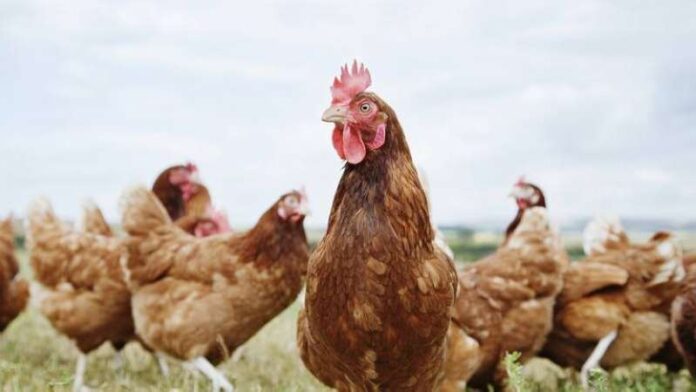A new study led by scientists at the University of Edinburgh, Imperial College London and the Pirbright Institute in Surrey shows that gene editing techniques can stop the spread of bird flu among chickens and reduce the risk of transmission to humans.
The results which were published in the journal Nature Communications, British scientists used CRISPR-Cas9, a powerful gene-editing tool, to completely restrict (but not prevent) the avian influenza virus from infecting chickens.
Introducing genetically modified chickens produced in the laboratory to farms can limit the spread of the disease.
Although the team’s method is designed only to prevent the spread of bird flu from chickens to chickens, it can also reduce the risk of transmission from chickens to humans, reports Al-Rai daily.
Only rarely do strains of bird flu spread to humans, although experts worry that the outbreak could be the next big pandemic.
Lead researcher Professor Mike McGraw, from the Roslin Institute at the University of Edinburgh, said: “Avian influenza poses a major threat to bird populations. Vaccination against the virus poses a number of challenges, with significant practical and cost issues associated with vaccine deployment. Genetic modification provides a promising path towards permanent resistance to diseases, which can be transmitted across generations, which protects poultry and reduces the risks to humans and wild birds.”
Gene editing changes an organism’s DNA in ways that can be inherited by subsequent generations.
Many gene editing techniques allow genetic material to be added, removed or changed at specific sites in the genome, the complete set of DNA instructions contained in a cell.
During the recent study, scientists used the famous genome editing tool “CRISPR-Cas9,” which is used to make precise modifications to DNA. CRISPR-Cas9 has been likened to a pair of genetic scissors, allowing small snippets of DNA to be removed and replaced. The team edited part of the DNA responsible for producing a protein called (ANP32A) in chicken germ cells (precursors of reproductive cells).
During infection, influenza viruses hijack ANP32A to help replicate themselves. Once fully grown in the laboratory, 10 genetically modified chickens were exposed to a normal dose of the strain of the virus that causes bird flu. The team found that the vast majority of chickens (nine out of 10) remained uninfected and there was no spread to other chickens.
The birds showed no signs that the change in their DNA had any effect on their health or egg laying, according to the scientists. To further test the birds’ tolerance, the scientists then exposed the genetically modified birds to a much higher dose of the virus. Half the group (five out of 10) then became infected, although the genetic modification offered some protection.
They found that the amount of virus in infected transgenic chickens was much lower than the level typically seen during infection in non-transgenic chickens.
More importantly, the genetic modification also helped limit the spread of the virus to just one out of four natural, non-genetically modified chickens housed in the same incubator.
This highlights the ability of the modification to stop the spread of avian influenza among natural, unmodified chicken populations.
As expected, there was no transmission from one genetically modified bird to another.

















